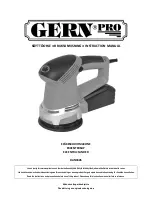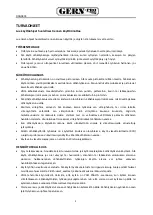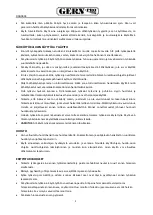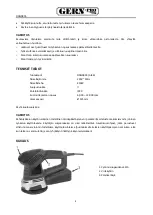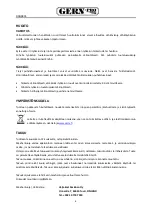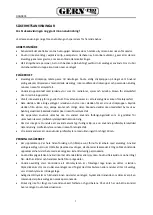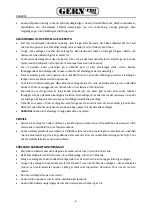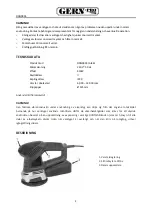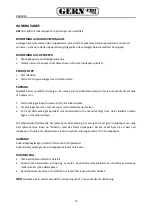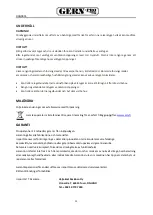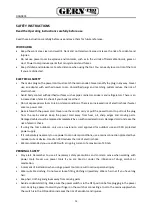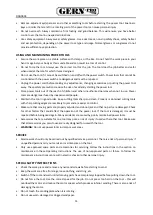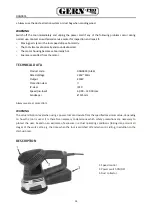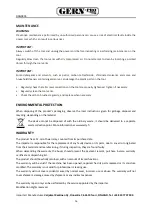
DAN0805
13
•
Remove adjuster keys/spanners and other assembling tools before starting the power tool. Spanners,
keys or similar that are left in a rotating part of the power tool can cause personal injury.
•
Do not overreach. Always maintain a firm footing and good balance. This will ensure you have better
control over the tool in unexpected situations.
•
Use safety equipment. Always wear safety glasses. Use a dust mask, non-slip safety shoes, safety helmet
and ear protection, depending on the power tool type and usage. Normal glasses or sunglasses do not
provide sufficient eye protection.
USING AND MAINTAINING POWER TOOLS
•
Secure the work piece on a stable surface with clamps, or the like. Do not hold the work piece in your
hand or against your body as this is unstable and can result in a loss of control.
•
Do not force the tool. Always use the correct tool for the job. The tool does the job better and safer
when used at the rate for which it was designed.
•
Do not use the tool if it cannot be switched on and off with the power switch. Power tools that cannot be
controlled with the power switch are dangerous and must be repaired.
•
Unplug the power cord before making any adjustments, changing accessories or putting the power tool
away. These safety precautions reduce the risk of accidently starting the power tool.
•
Store power tools out of the reach of children and other unauthorized persons when not in use. Power
tools are dangerous if used by inexperienced people.
•
Maintain the tool in good order. Keep cutting tools sharp and clean. Properly maintained cutting tools
with sharp cutting edges are less likely to jam and are easier to control.
•
Make sure that moving parts are properly adjusted and do not jam and that no parts are damaged. Check
for other factors that could affect the operation of the power tool. If the tool is damaged, it must be
repaired before being used again. Many accidents are caused by poorly maintained power tools.
•
Accessories that are suitable for one tool may pose a risk of injury if used with another tool. Make sure
that all accessories you plan to use are really designed for use with the tool.
•
WARNING:
Do not use power tools in damp or wet areas.
SERVICE
•
Service work should only be carried out by qualified service personnel. There is a risk of personal injury if
unqualified persons carry out service or maintenance on the tool.
•
Only use approved spare parts and accessories for servicing. Follow the instructions in the section on
maintenance in these Operating Instructions. The use of non-approved parts or failure to follow the
maintenance instructions can result in electric shock or other personal injury.
SPECIAL SAFETY INSTRUCTIONS
•
Check the work piece and remove any nails and screws before starting to sand.
•
Keep the work area free from rags, loose clothing, and string, etc.
•
Switch off the tool and wait until all moving parts have completely stopped before putting down the tool.
•
Do not force the tool. Use the correct speed for the job. Do not press too hard on the tool – this will
overload the motor and reduce the motor speed, which produces inferior sanding. There is also a risk of
damaging the motor.
•
Do not touch the sanding plate when it is rotating.
•
Do not use worn, damaged or clogged sandpaper.
Summary of Contents for DAN0805
Page 17: ...DAN0805 17...

